
Habanero peppers are some of the hottest peppers around, containing a high amount of chemicals called capsaicinoids, which give them their signature spicy flavor. Surprisingly, cooking your peppers can actually make them hotter in some cases or milder in others by affecting the levels of these chemicals. The method of cooking you use determines whether your habaneros pack more or less of a fiery punch in your finished dishes.
Hot Habaneros
Habanero peppers are a type of chile pepper. They are rated between 100,000 and 300,000 Scoville units in terms of their heat content. This system is based on the amount of capsaicin contained within the peppers, which is up to 60 times the amount found in jalapeno peppers, according to the University of California Division of Agriculture and Natural Resources. The pungency of each individual pepper depends on its variety, how ripe it is and its growing conditions; habaneros are native to South America and thrive in hot, dry conditions. Most of the heat-inducing capsaicin is found within the seeds and seed membranes of the peppers.
Peppers Feeling the Heat
A scientific study published in the April 2010 issue of "Food Chemistry" found that cooking habanero peppers could increase the amount of capsaicinoids contained in the peppers, including capsaicin, dihydrocapsaicin and nordihydrocapsaicin. When the peppers were grilled at around 410 degrees Fahrenheit, the amounts of these chemicals increased, making the resulting peppers hotter than they were originally. Conversely, boiling the habaneros at around 205 F decreased the amounts of these chemicals and made the peppers milder in flavor. This means that you can increase the flavor and spicy punch of your habaneros by grilling them before adding them to your spicy chili or salsa.
Hot or Not
While cooking can increase or decrease the amount of capsaicinoids in your habaneros, it does so in relatively moderate amounts. To really make your peppers milder, remove their seeds and seed membranes prior to cooking to naturally lower the amount of heat that they add to your dish. Cooking habaneros with acidic ingredients like vinegar or tomatoes can help to neutralize the capsaicin in the peppers, counteracting their spiciness, recommends the Exploratorium website. Sugar and fats like sour cream also help to reduce the heat of the peppers in your dish, so stir some in if you want a milder flavor to your cuisine.
It's Getting Hot in Here
No matter how you cook your peppers, always wear gloves when handling cooked or raw peppers to prevent your habaneros from leaving behind capsaicin on your hands. Residual capsaicin can cause a burning sensation if you touch your face, eyes, nose or mouth. If you plan on grilling your habanero peppers, use less of them in your dish to account for the increase in heat that will occur during cooking; add a little more if you are boiling them. Store your cooked peppers within two hours in the refrigerator at 40 F or below to prevent the growth of harmful microorganisms. Reheat your peppers before serving, if desired.
Related Articles

Does Fire Roasting a Jalapeno Make It ...
How Many Calories Are in Roasted Red ...
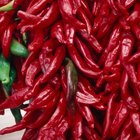
Chinese Hot Pepper Types

Can I Eat the Seeds of a Habanero ...
Solutions for Too Much Heat in a ...
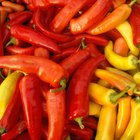
What Peppers Have Capsaicin?

How Much Hotter Is a Habanero Than a ...
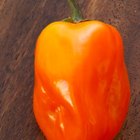
How to Grind Habanero Peppers

Nutrition Facts for Cooked Poblano ...

How to Preserve Bell Peppers for Use ...

What Is Chipotle Seasoning?

Substitutes for Scotch Bonnet

How to make Stuffed Jalapeno Peppers ...

Substitute for Thai Chili
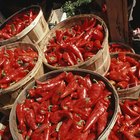
Health Benefits of Hot Peppers
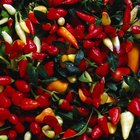
How to Freeze Cherry Peppers

How to Cook Habaneros

How to Roast Green Peppers

How to Infuse Vodka With Jalapenos

How to Preserve Roasted Red Peppers
References
- University of California Division of Agriculture and Natural Resources: Peppers
- Food Chemistry: Effect of Cooking on the Capsaicinoids and Phenolics Contents of Mexican Peppers
- Exploratorium: The Science of Cooking
- Good Housekeeping: How to Get Hot Peppers Off Your Hands
- National Gardening Association: Hot Peppers and Capsaicin
Resources
Writer Bio
Based in Las Vegas, Susan Paretts has been writing since 1998. She writes about many subjects including pets, finances, crafts, food, home improvement, shopping and going green. Her articles, short stories and reviews have appeared on City National Bank's website and on The Noseprint. Paretts holds a Master of Professional Writing from the University of Southern California.
Photo Credits
PhotoObjects.net/PhotoObjects.net/Getty Images